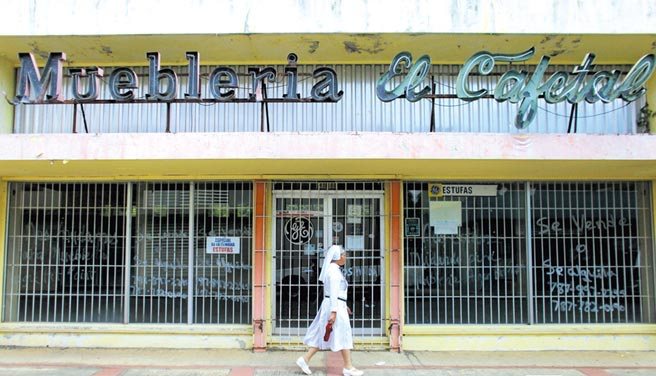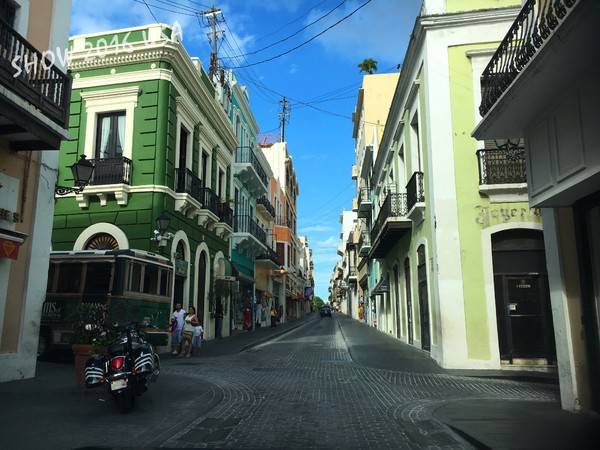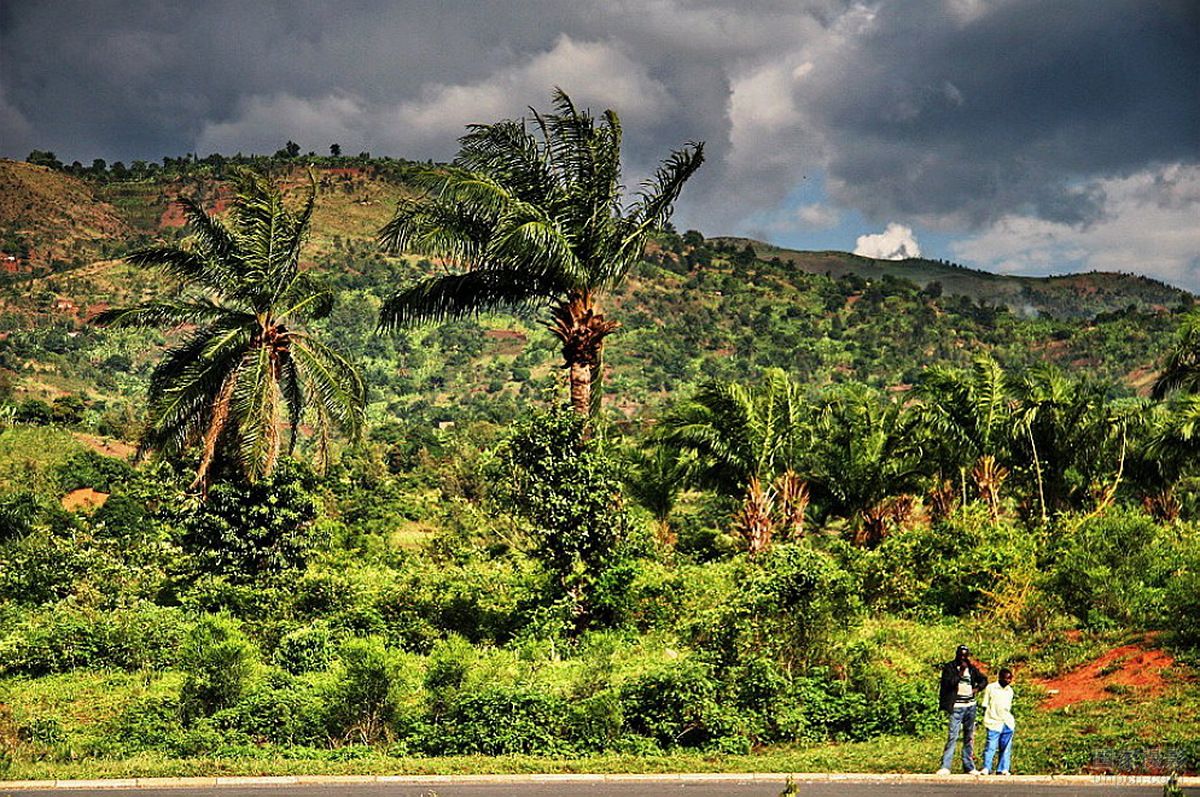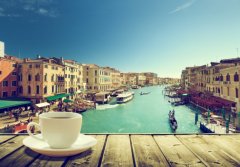No one grows coffee anymore. What happened to Puerto Rico, once the sixth largest coffee producer in the world?
For professional baristas, please follow the coffee workshop (Wechat official account cafe_style)
"
The picturesque Midwestern mountain city of Lares, once famous for its coffee, ice cream and 19th-century rebel history, is now a negative feature of the picturesque Midwestern mountain city of Lares, which has lost 400000 residents since 2000.
"
Since the 2000 census, 1 million people in Larez have moved out of the country, the highest proportion in the island. Once the bustling downtown square used to be the selling point of the rebel uprising in the Spanish colonial era, but after the evacuation of banks and government agencies, there are now abandoned shops and dilapidated buildings covered with handwritten notices asking for rent or sale. This scene aptly depicts the cruel reality of people moving away from Larez.

A large number of people have left the United States.
Martinez, the owner of the coffee shop, said that business was slow and they were off at 1pm. Lu Zhi, an old woman who witnessed the prosperity of the square in her childhood, helped in her sister's souvenir shop one day, but no customers came to her door all day. Soto, chairman of the Coffee Farmers' Association, is finding it increasingly difficult to retain staff. No one wants to do rough work on farmland with a minimum wage of $5.25. Even his housekeeper, who earns $9 an hour, resigned and went to the United States.
The famous Heradria Larez ice cream is also not immune. Former US President Clinton once ate ice here and is also a popular restaurant that tourists must visit, but at a time when citizens are facing legal auctions of their houses, jobs are difficult to find and more and more people choose to emigrate to the United States, the store's revenue has plummeted 30% this year.
Kujevas, a senior executive at the department store, admitted that the professionals had run out. "Nurses, teachers, doctors, firefighters and dentists have all left," he said. The two police officers stationed near the department store for many years "disappeared one day. They are all in Texas now."

It is difficult to solve the economic predicament for 10 years.
Larez's decline may be a harbinger of Puerto Rico's economic woes. This autumn, the government will close 167 schools, thousands of teachers may lose their jobs, the pension of the silver-haired people will shrink, the business tax will soar to 11.5%, and various industries will not be able to survive. After a decade of economic hardship, Larez's unemployment rate has reached 22.7%. Puerto Rico's financial meltdown seems to show no sign of ending. The local government went bankrupt in May because it was unable to pay its $123 billion debt and pension obligations, creating the largest local government bankruptcy in US history.
Puerto Rico used to be the sixth largest coffee producer in the world (now ranked only 52nd), and Larez's caffeine was so excellent that it was even sent to the Vatican that year. But after years of economic downturn, the government stopped paying fertilizer subsidies, farmland shut down, harvests plummeted, and Larez became the poorest city on the island. In 2002, Larez had 1209 farmland. Ten years later, there were fewer than 700. The average local weekly salary is only $323, and according to 2015 data, Lars' household income is at the bottom of the island.

"the people who left came back to tell everyone how hard they were in Orlando and couldn't survive without three jobs," Cuevas said. But the difference is that you can find three jobs there, but you can't find a job here. "
Population migration is not uncommon for Puerto Rico. But in the past, outflows and inflows were on a par. After that, however, as manufacturing and agriculture continued to decline, places such as Larez gradually declined, and population mobility became more and more unbalanced, and everyone wanted to leave whenever they had the chance.
Du Ani, a scholar who studies the migration of Puerto Rico, laments, "ironically, Larez is the cradle of Puerto Rico's independence and a symbol of national identity, but it has lost the most population." the only ones who can't get out are young and old.

However, Larez Mayor Sampagan believes that the population loss figures are slightly exaggerated. When the census takers visited, most of the seasonal jobs were in a shutdown period, and people would temporarily leave to go to the United States to "try their luck." the unemployment rate remains high because many people work illegally to defraud welfare payments. But Pagan admits that school enrollment is indeed lower, with fewer people watching sporting events and going to church.
In the negative atmosphere, there are still people who have not yet despaired about the future. Soto opened a coffee shop on the top of the mountain with a bird's-eye view of the prayers, and he expected a steady stream of tourists, so he spent millions of dollars to build a mountain resort; young Jose opened a small ice shop next to the famous ice cream shop and planned to renovate the upstairs room into an Airbnb. He said that everyone thought he was crazy. "if I don't succeed, I'll move in by myself, and people always have hope."
Important Notice :
前街咖啡 FrontStreet Coffee has moved to new addredd:
FrontStreet Coffee Address: 315,Donghua East Road,GuangZhou
Tel:020 38364473
- Prev

Coffee culture in six major coffee countries
Professional barista exchanges, please pay attention to coffee workshop (Weixin Official Accounts cafe_style ) French coffee culture has heard that France once drank less coffee due to coffee shortage, and immediately saw more people napping. It may seem an exaggeration, but it is true that the French love coffee. When the Gulf War broke out in 1991, France was also one of the participating countries. Some people in the country were worried about the impact of the war.
- Next

Marks in Life ── inherits Italian Coffee Culture for a long time
Professional barista communication please follow the coffee workshop (Wechat official account cafe_style) Men should be like good coffee, both strong and enthusiastic! When it comes to coffee, ── Italian proverb cannot help but mention that there is a famous saying in Italy: men should be like good coffee, strong and enthusiastic! And espresso Espresso is the classic representative of espresso, a small cup of strong and strong
Related
- How did the Salvadoran coffee industry develop in Central America?
- What exactly does the golden cup extraction of coffee mean?
- The Origin of Coffee flower
- [2023 Starbucks World Earth Day] there are more meaningful things besides free Starbucks coffee!
- What kind of coffee is there in Spain? 9 Flavors of Spanish Coffee
- Aromatic African coffee| Kenya's coffee culture and historical production area
- Liberica Coffee Bean knowledge: the characteristics of Liberian Coffee beans of the three original species of Coffee beans
- The origin and formula of Spanish latte introduces the taste characteristics of Bombon coffee in Valencia, Spain.
- How to adjust the solution of over-extracted coffee
- What is the tasting period of coffee beans? What is the period of coffee and beans? How should coffee wake up and raise beans?

